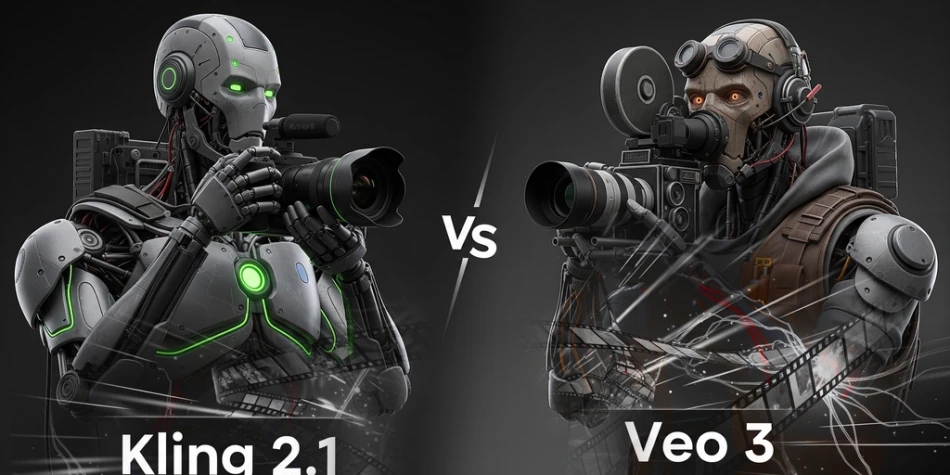
Best Short-Form AI Video Generator? Kling 2.1 vs Google Veo 3
Chinese AI firm Kuaishou launched its upgraded Kling 2.1 models just days after Google's Veo 3 drop. Here's how they stack up.[...]
Kuaishou's Kling 2.1: Pushing the Boundaries of AI-Generated Video
The world of AI-generated video has taken a giant leap forward with the release of Kuaishou's Kling 2.1. This advanced video-generation platform, launched by the Chinese tech company known for its social media innovations, has set a new standard for cinematic quality and realism.
Kling 2.1 boasts a range of technical improvements, including faster generation speeds, better prompt adherence, and a significant increase in overall realism. The Master tier, in particular, utilizes advanced 3D spatiotemporal attention mechanisms and proprietary 3D VAE technology to deliver what the company describes as "cinema-grade output."
The timing of this release is especially noteworthy, as it comes on the heels of Google's unveiling of Veo 3, further intensifying the competition in the AI video leaderboards. According to Google Trends, interest in "AI video" has reached an all-time high, driven by the impressive capabilities of these cutting-edge models.
Kling 2.1: Three Tiers for Every Need
Kuaishou's strategic approach sets Kling 2.1 apart from its competitors. The platform offers three distinct tiers: Standard mode at 720p, Professional mode at 1080p, and the top-tier Master mode, also at 1080p. This pricing structure reflects a nonlinear progression, with the Professional mode delivering visual quality very close to Master's at less than half the cost.
Benchmarking the Best: Kling 2.1 vs. Veo 3
In our testing, both Kling 2.1 and Veo 3 demonstrated clear upgrades over the previous generation of models. However, each model excelled in different areas, making the choice between them a matter of personal preference and specific needs.
- Text Generation: Veo 3 showcased a slight advantage in generating text more consistently across frames.
- Realism and Emotion: Kling 2.1 focused on portraying emotions with greater authenticity, while Veo 3 delivered a more cinematic approach with the addition of audio.
- Image-to-Video: Kling 2.1 proved superior in converting source images into dynamic video, with better camera movement and prompt adherence.
- Dynamic Shots: Both models impressed with their ability to handle fast-paced action sequences, but Kling 2.1 demonstrated a stronger grasp of prompt adherence.
Ultimately, the choice between Kling 2.1 and Veo 3 will depend on the user's specific needs, budget, and personal preferences. Both models represent significant advancements in the field of AI-generated video, and the competition between them is sure to drive further innovation in the years to come.
Most Viewed News








